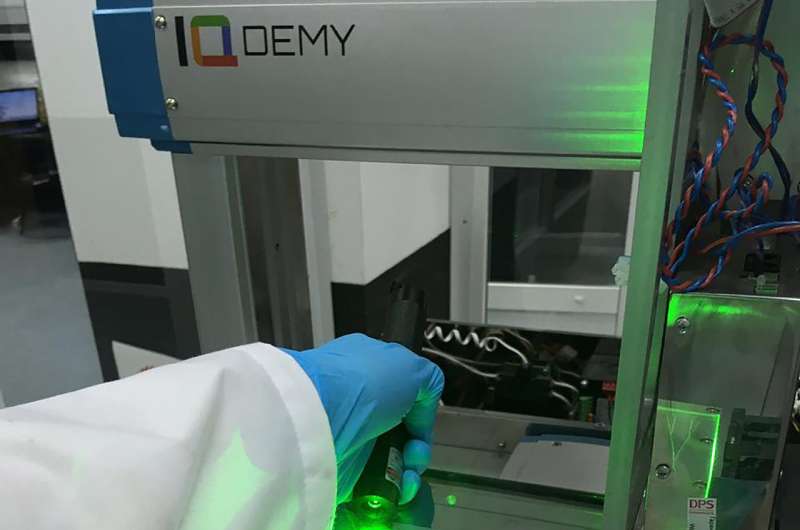Inkjet printers can produce cheap micro-waveguides for optical computers

Scientists from ITMO University have proposed a new technology for creating optical micro-waveguides using inkjet printing. Using this method, it is possible to quickly create waveguides with the necessary parameters without expensive equipment and complex procedures. The new technology is optimized for the production of optical elements on an industrial scale. The results are published in Advanced Optical Materials on 20th November 2018.
Today, optical fiber is widely used in communication. However, as devices become smaller, scientists and engineers are seeking to create an analogue of fiber at the microscale. Such devices are called waveguides.
Most researchers now suggest complex and expensive technologies for creating waveguides, for example, laser ablation or photolithography. These are time-consuming procedures requiring complex equipment, rare materials and additional sample processing. Scientists from ITMO University now offer an alternative method for creating optical micro-waveguides, based on a common inkjet technology.
Waveguide printing begins with the preparation of special ink. Its main ingredient is a suspended solution, or sol, of titanium dioxide nanoparticles. Such a material was chosen due to the high refractive index, which is necessary for the waveguide to conduct the signal. In order to achieve suitable ink parameters, the scientists selected the solvents, the concentration of the main component and the surfactants. The inkjet printer applies the material according to a given geometry on a clean glass substrate.
"The feature of our work is that we explained the choice of material, working wavelength and waveguide geometry, instead of simple description of properties and methods. However, the main advantage is a simple and cheap method suitable for industry. The results confirmed that the method can be adapted without compromising quality," says Anastasia Klestova, member of SCAMT Laboratory of ITMO University.
Currently, scientists work not only on the industrial adaptation of waveguide inkjet printing. The near plans of the laboratory include applying inkjet printing for the creation of other elements necessary for processing the optical signal.
"The most difficult part for the engineering of advanced devices is the creation of efficient signal transport lines. Our solution removes all the major limitations in this area and I have no doubt that soon we will see photon computing devices with waveguides created with our method," says Alexander Vinogradov, researcher at the SCAMT Laboratory of ITMO University.
More information: Anastasiia Klestova et al, Inkjet Printing of Optical Waveguides for Single-Mode Operation, Advanced Optical Materials (2018).
Journal information: Advanced Optical Materials
Provided by ITMO University





















